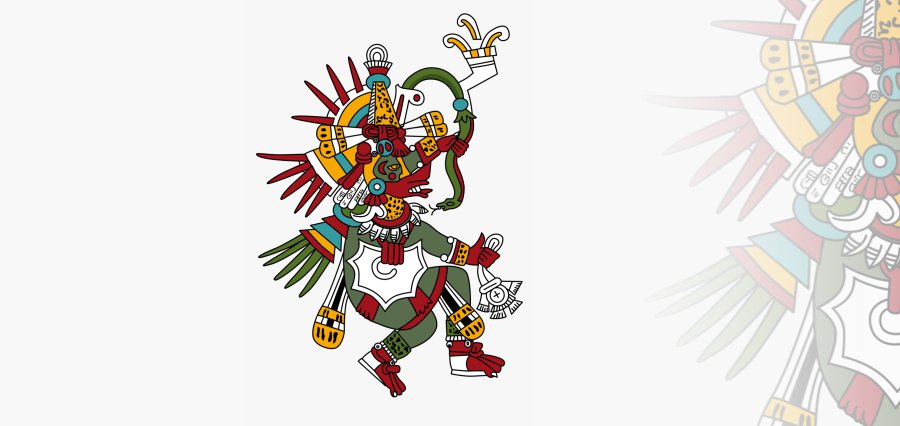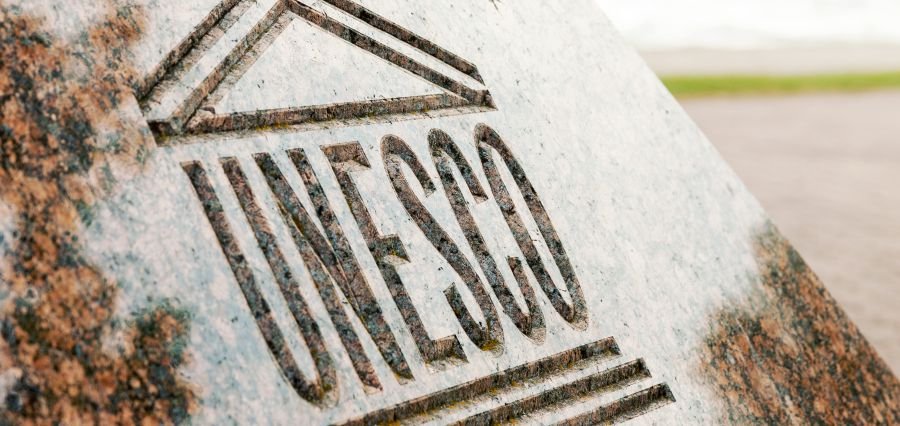Considered one of the great civilizers, Quetzalcoatl was a god with the head and body of a feathered snake. One legend claims that he sailed from the east in an attempt to overthrow Guatemala’s last ruler. He was thwarted by a storm at sea, but his cult only grew among the high priests of Tenochtitlan – until they were overthrown by Hernan Cortes and destroyed their idols to make way for Christianity.
- Quetzalcoatl (Aztec God with the head and body of a feathered snake)
- Huitzilopochtli (Aztec god of war)
- Tezcatlipoca (Aztec god of smoke and night)
- Tlaloc (Aztec god of rain, water, and Earth)
- Mictlantecuhtli (Aztec god of death)
The Aztec Gods
The Aztec religion included many gods who personified nature, weather, farmers, and people’s personal qualities. Many had more than one function. Some gods were propitiated for various seasons of the year, while others only appeared at certain times of the day or in certain locations.
These deities were often associated with one another by marriage or by having children with each other. The major gods were grouped into two classes: those who governed the four cardinal points of the compass and those associated with human activities and desires.
1. Quetzalcoatl (Aztec God with the head and body of a feathered snake) – The feathered serpent god was called Quetzalcoatl by the Aztecs and Kukulkon by the Mayas. From his name and various associations, it is apparent that he was a god of culture, law, learning, and civilization. This is also supported by the fact that he is often depicted wearing a conical hat. The Mexicans had colorful feathers called quetzalli hanging from their conical hats.
This god was a deity of the air and air currents, and also physically connected with a feathered serpent. He was the creator of life on earth, but when he saw that human beings were suffering, he decided to leave the earth. According to one legend, Quetzalcoatl’s departure from Tula coincided with his prophecy to return in the year One Reed (A.D. 987).
2. Huitzilopochtli (Aztec god of war) – The god of war was associated with fire. He is depicted as wearing a headdress of hoops! His counterpart in the Mayan pantheon was Katun. His name is composed of the Nahuatl words huey/tzel- (lit. “one who causes to grow”) and choch- (lit. “to be threshed” or “to die”). His element was Air, and his color red, the color associated with Mars is also associated with war in Chinese religion.
This god was also the god of dance, fire, and war. He was a deity of ball games and is thus depicted with a ball at his feet. He acted as the patron deity of warriors.
Huitzilopochtli’s name may actually be derived from “the swallower of blood.” In other words, this god consumed the hearts of human sacrifices.
3. Tezcatlipoca (Aztec god of smoke and night) – The god of smoke and night was also known as the god of evil, sorcery, and misfortune. His name literally means “Smoking Mirror.”
Tezcatlipoca’s nemesis was Quetzalcoatl, the former ruler of Tula. Tezcatlipoca is also associated with moral and spiritual principles and can be regarded as the divine mirror that reflects the faults of humankind. This god had an association with jaguars and was connected to obsidian mirrors or stars. He was said to be the most powerful and influential god of the Aztec pantheon.
His color was black. He could be as cruel as any other god, but he did not do human sacrifices. He was also a patron of music and dance, as well as a god of artistic and musical craftsmen.
4. Tlaloc (Aztec god of rain, water, and Earth) – The god of rain, water, and Earth was associated with fertility and agriculture. His name literally means “He Who Makes Things Sprout.” He is depicted as a young man with curly hair that hangs down to his shoulders.
Tlaloc’s worship in Mexico may have originated in the state of Guerrero, where he was originally considered a supreme god. In the Aztec legends concerning the foundation of Tenochtitlan, Tlaloc makes an appearance during the sacrifice of a young woman by throwing a knife at her heart.
This god is often accompanied by lightning and thunder, which are also related to rain. One source claims that Tlaloc was associated with volcanoes in the Basin of Mexico as well as the high mountains of the Sierra Madre.
Tlaloc was a benevolent god, and sometimes he would even send rain when there was not enough water. He also had a dark side: he could be malevolent and demand sacrifice.
5. Mictlantecuhtli (Aztec god of death) – The god of death was associated with the color black, and he was also a god of the underworld. This god’s name is an Aztec word that literally means “Lord of Mictlampa.”
Mictlantecuhtli’s wife was Mictecacihuatl. She is often depicted as a skeletal figure who carries a basket on her back. She has also been associated with black magic in some sources. His symbol is a skull made up of four human hearts and his element is earth. This god was also known as Titlacauan or Totecuhtli, and there were several other gods with the name Mictlantecuhtli.
This god did not command the same respect that Huitzilopochtli did, but he was still revered by common people because he commanded death and rebirth. Some cultures regard this deity as a psychopomp rather than an evil lord.
Seeing each of these gods as a god of a different element: Quetzalcoatl (air), Huitzilopochtli (fire), Tezcatlipoca (water and earth), Tlaloc (water) and Mictlantecuhtli (death). This could help one to better understand the Aztec culture, its spirituality, and what they believed in.









